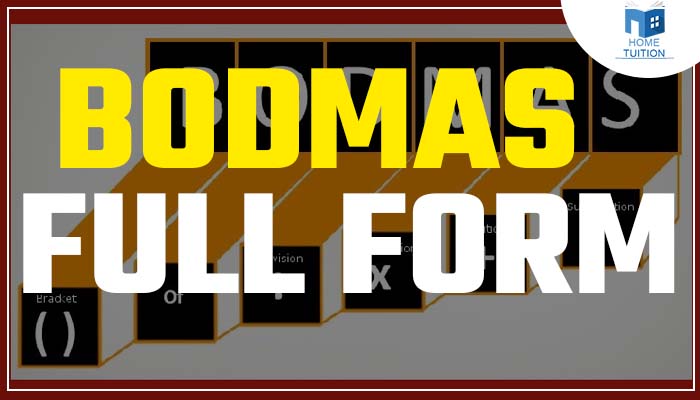Full form of BODMAS?
Bracket, of, Division, Multiplication, Addition, and Subtraction is the full form of "BODMAS." In mathematics, there are several signs against each numerical calculation. To make the complex addition process easier, the BODMAS rule is used. This rule informs you of the first calculation, followed by another. When dealing with a long but complicated addition, BODMAS will help you the most.
There is another rule called PEDMAS. The full form of PEDMAS is parentheses, exponents, division, multiplication, addition, and subtraction. It is easy to deal with the sum with one or two operations and two or three numbers. But what if you are asked to solve a complex sum with several numbers and operations? Without the BODMAS abbreviation, you will be confused, and the result will not be correct.
Importance of BODMAS Rule
When solving a complex sum, it is not always possible to remember actions by series. But if you remember the term 'BODMAS,' you will remember the exact series when solving the problem. For example, if you mistakenly multiply a number before dividing, you will get an incorrect result.

Where can you apply the BODMAS rule?
You can only use the BODMAS shortcut rule where you have multiple number operations. For individual math problems, the BODMAS rule is not used. It will only be handy when solving long, complex summations with several operations.
Solving math problems by simply adding and multiplying or subtracting and dividing sounds quite simple. Knowing the BODMAS full form will help students understand the order of solving sums with these operations. It will help them to understand well and help them to solve each multi-operation sum quickly.
Conditions to solve the problems
few are the conditions that need to be followed to get a basic simplification of the problems. These can be as follows:
- X + (Y + Z) = X + Y +Z : Open the bracket and then add the terms
- X – (Y + Z) = X – Y – Z: Open the bracket and then multiply the negative sign with each term that is present inside the bracket. All the positive terms will become negative, while all the negative terms will become positive.
- X (Y + Z) = XY + XZ: Multiply the term outside the bracket with each of the terms that are present in the bracket.
What would happen if you don’t apply the BODMAS rule?
If you don’t apply the BODMAS rule, you must do the addition and multiplication. By doing this, you will get the incorrect answer. It would help if you always started solving the summation with the numbers and the operations inside the bracket. The BODMAS rule allows you to do the right way of multiple functions.